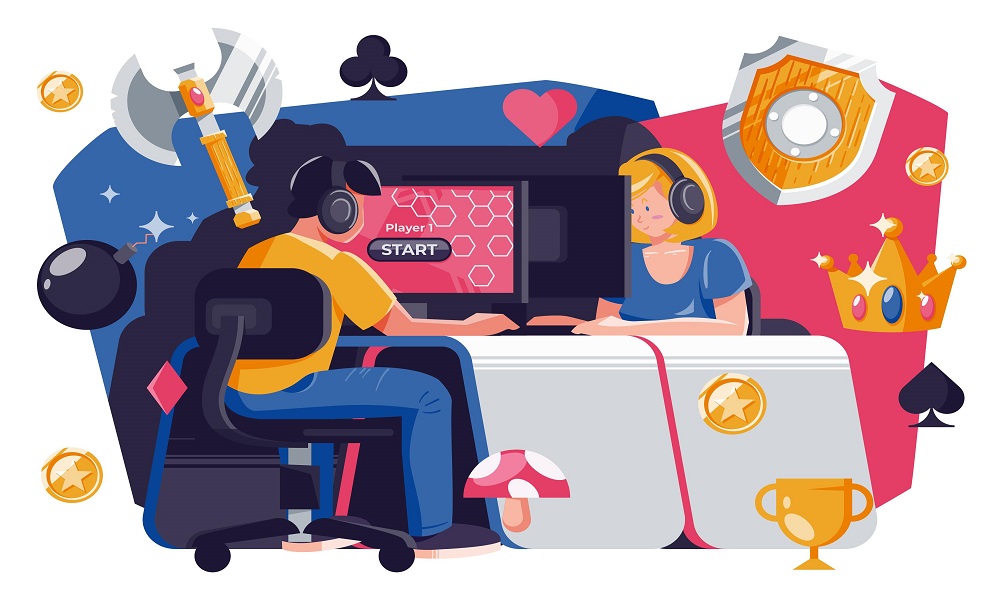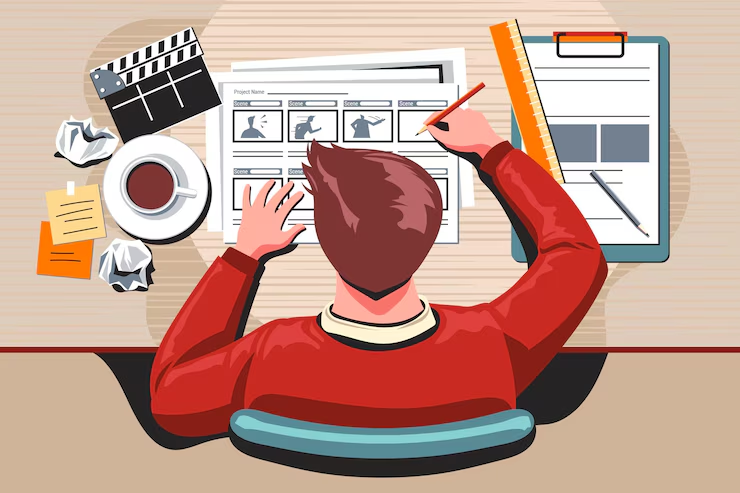Imagine making a game that includes all of your favorite elements from the games you’ve played—we all have memories of playing that one particular game repeatedly late into the night. This need not remain a pipe dream. With this tutorial, make it a reality. Using the information and resources provided by this site, you can create a game. With this guide, you’ll be able to tackle everything from the fundamentals of programming and game design to more complex subjects like 3D graphics and animation. Select your character now, and let’s begin!
Understanding the Fundamentals of Video Game Development
Game development courses refer to the steps involved in creating a video game. It incorporates several different fields, such as animation, sound design, painting, programming, and more. Game development is a difficult process that calls for a broad set of abilities.
Steps of Game Development
Step 1:
Knowing what kinds of games exist and choosing the sort you want to make are the initial steps in the game production process.
There are a variety of genres, such as action adventure puzzle simulation.
Step 2:
Selecting a game engine comes next.
A game engine is a software development kit that provides the necessary instruments and materials to create a game.
There are numerous games available, including
- Cryengine
- Unity
- Unreal Engine
Step 3:
Selecting a game engine comes next.
A game engine is a software development kit that provides the necessary instruments and materials to create a game.
There are numerous games available, including
- Creating a concept
- Coming up with the story
- Creating art assets
- Developing characters
- Creating environments
- Designing game mechanics
Step 4:
- Once you have designed the game, you’ll need to program it.
- This involves writing code to control the game’s logic and behaviour.
Step 5:
- Now that we have developed the game, we need to test it.
- Testing ensures that the game functions as intended.
- This step also involves correcting any discovered bugs.
Selecting a Platform
You have four primary options for the platforms on which to develop your game. The kind of game you can make depends on the platform you select. There are many kinds of platforms.
Desktop Platforms
- Mobile Platforms
- Web Platforms
- Console Platforms
Desktop Platforms
The most popular and adaptable platforms for game creation are desktop ones. They demand highly sought-after technological abilities and provide a high degree of flexibility in game design. Among the widely used desktop platforms are
- Unity
- Unreal Engine
- GameMaker Studio
Mobile Platforms
Mobile devices are an excellent platform for creating games intended for a wide audience. Compared to PC games, mobile games are frequently easier to play and require less technological expertise. Among the widely used mobile platforms are
- Unity
- Cocos2d
- Corona
Web Platforms
Using Web platforms, it is possible to make browser-based games. They are comparable to most mobile games and frequently far simpler than PC versions. Well-known websites include
- HTML5
- Flash
- Unity
Console Platforms
Console games typically demand greater technical expertise and are more sophisticated than other games. Among the widely used console platforms are
- Xbox
- PlayStation
- Nintendo
Finding Resources and Tutorials
The next step after mastering the fundamentals of game creation is to look for tools and tutorials to help you advance your understanding and proficiency. Thankfully, there are tons of excellent web resources accessible to assist you in getting started.
Online Tutorials
Online tutorials are among the best places to start. For every kind of game development, there are several tutorials online, ranging from entry-level materials for novices to more complex ones for seasoned creators. These tutorials give you the knowledge and resources you need to make your own games, in addition to teaching you the fundamentals of game development.
Online Forums
Online forums are another great resource for game development. These forums are a great place to ask questions, get advice, and find resources for game development. You can also find helpful tutorials and tips from experienced game developers.
Books and Websites
Finally, there are numerous publications and websites dedicated to the vast field of game creation. These resources—books and websites—offer comprehensive knowledge on game creation as well as practical advice. You may simply master the fundamentals of game development and begin making your own games by utilizing these tutorials and tools.
Creating a Game Plan
Now is the time to draft a strategy. The following should be included in this plan:
Describe the idea behind the game:
What kind of video game are you making?
What is the objective?
Who is the intended audience?
One of the most crucial phases in the game development process is creating a plan of attack. It will assist you in remaining focused and organized. A well-thought-out approach will enable you to make a profitable game.
Testing and Debugging
Testing and debugging are essential components of game development. It is the process of locating and repairing coding problems in video games. This procedure is required to make sure there are no issues and the game functions properly.
Testing
Testing involves playing the game and scanning it for errors or problems. You have the option to use automated testing tools or conduct manual testing. While automated testing tools can run tests that check for specific faults, manual testing entails playing the game and looking for any issues.
Debugging
The process of identifying and resolving game code issues is known as debugging. To accomplish this, examine the code and search for any mistakes or problems. You can manually carry out debugging or use debugging tools. You can utilize debugging tools to locate the fault’s origins and assist in fixing them.
Releasing and Marketing Your Game
It’s time to release your game into the wild after you’ve finished it. Although marketing and releasing your game can be intimidating, you can ensure that the right people play and see it. First, make a plan for the game’s release and marketing. Select the platforms you wish to launch your game on, including:
- Steam – for PC
- App Stores – for mobile
- Xbox/PlayStation – for Console
Research each platform to ensure that you meet the standards. Next, set up your game’s website and social media accounts. This will serve as the focal point of your marketing initiatives. Make sure your website is user-friendly and contains all the information prospective gamers may need about your game. Utilize social media to interact with potential players and promote your game. Lastly, draft a marketing strategy outlining your approach to game promotion. This might consist of:
- Creating trailers
- Posting screenshots
- Gameplay videos
- Running ads
To have your game mentioned in publications and on YouTube channels, you may also get in touch with influencers and the media.
Conclusion
It is important to understand the basics of game development before diving in. This guide provides an overview of the essential concepts and tools required to initiate game development. You can create your games and develop your skills with knowledge of the basics. With practice and patience, you can become a successful game developer.
Enroll in game development courses at the Unitedworld Institute of Design (UID) to gain the skills and knowledge you need. Visit the UID website to learn more and take the first step towards your game development career today!





